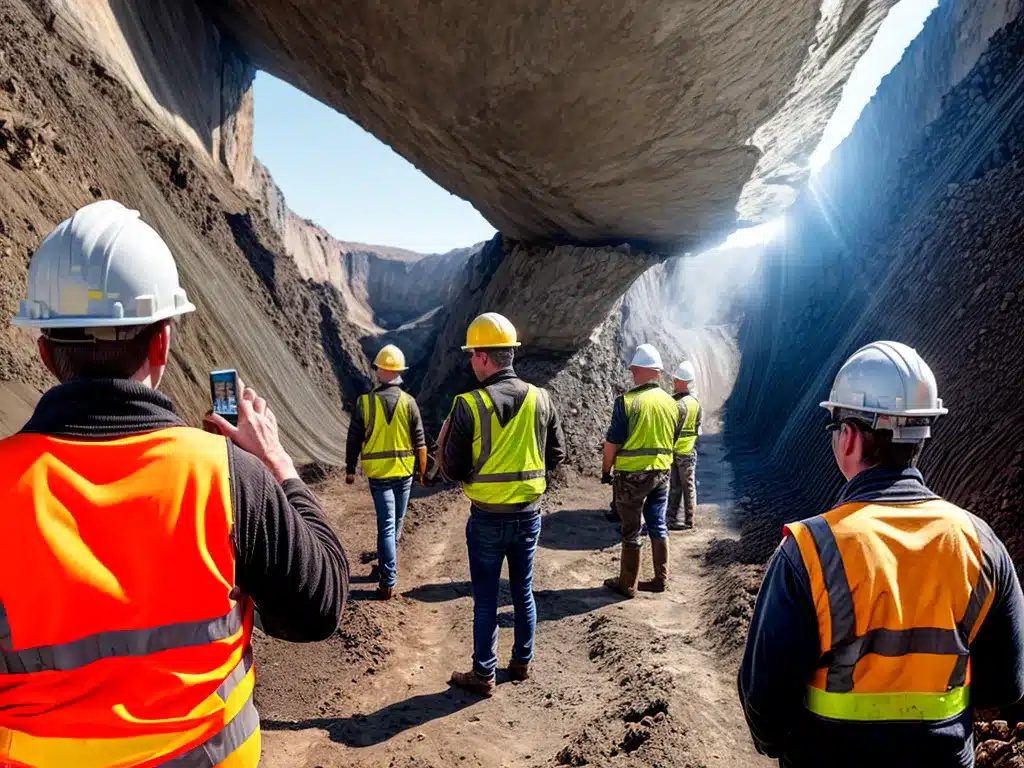
IoT in Mining: Improving Safety and Efficiency Underground
The adoption of Internet of Things (IoT) technologies in the mining industry has the potential to transform underground operations, making them safer, more efficient, and more productive. In this article, I will provide an in-depth look at how IoT is being utilized in underground mines.
How IoT Improves Underground Mining Safety
Underground mining is an inherently hazardous occupation. According to the United States Bureau of Labor Statistics, there were 24 fatal injuries in the metal and nonmetal mining sector in 2020. IoT technologies can help reduce these risks in several ways:
Real-Time Worker and Equipment Tracking
Sensors and wearable devices allow for real-time tracking of miner and equipment locations underground. This allows for rapid response in emergencies and better visualization of how manpower and resources are deployed. BoldMan-down alerts can instantly notify supervisors if a miner is in distress or immobile.Bold
Remote Operation of Equipment
Operating mining equipment like loaders, trucks, and drills from the surface removes miners from hazardous areas. Automated haulage systems are increasingly being adopted to transport ore and waste without drivers underground. Remote operation centers allow multiple vehicles to be controlled from the safety of the surface.
Proactive Gas and Ground Monitoring
Networks of gas, air quality, temperature, and ground sensors can provide continuous environmental monitoring across the mine. Alerts on dangerous gas buildups and ground stability issues can be relayed in real-time, allowing for proactive ventilation on demand and rapid evacuation if needed. This improves upon periodic inspections.
Collision Avoidance and Navigation Assistance
With underground mines expansive and largely identical in appearance, IoT helps vehicles, equipment and miners navigate safely. Tracking sensors alert drivers to approaching vehicles while proximity detectors can prevent collisions. GPS and navigation assistance helps prevent disorientation and miners getting lost.
How IoT Enhances Efficiency in Underground Operations
While safety is paramount, IoT also enables miners to extract resources faster and more productively:
Asset Tracking and Preventative Maintenance
Sensors on vehicles and equipment relay performance metrics like engine health, temperatures, pressures, vibrations, etc. Software analytics can then predict problems before failures occur, flag required maintenance and reduce downtime. Knowing where assets are allows for better coordination and utilization.
Increased Automation
Automating drills, loaders and other machinery allows for greater efficiency, consistency and around-the-clock operation without tiring human operators. IoT data also informs automatic adjustments for better drilling accuracy and mining quality.
Supply Chain Visibility and Coordination
In large underground mines, coordinating the flow of personnel, equipment and materials is hugely challenging. IoT provides total supply chain visibility – managers know exactly what is underground at any point in time. Sensors can trigger automated replenishment and more efficient routing.
Ventilation-on-Demand
Ventilating underground atmospheres is energy intensive. IoT sensors only activate ventilation where and when needed, based on gas concentrations and miner proximity. This optimizes airflow and reduces energy waste.
Condition-based Maintenance
As mentioned above, IoT data enables equipment maintenance based on actual condition and criticality, rather than fixed schedules. This minimizes expenditure on routine servicing and reduces overall maintenance costs.
Implementing an IoT Solution Underground
To leverage IoT’s benefits, mines require robust networks, analytics software and integration with operations:
-
Underground connectivity – LPWAN networks like Sigfox or LoRa allow longer-range wireless throughout the mine without WiFi or cellular. Meshed networks ensure redundancy.
-
Edge computing – Processing data underground reduces backhaul traffic. Rugged edge servers placed inside the mine analyze data and generate insights in real-time.
-
Analytics software – Platforms like Predix ingest sensor data and provide visualization, monitoring and predictive capabilities to maximize value.
-
Operational integration – To enable automation and real-time response, IoT must interface directly with mining control and safety systems. IT/OT integration is crucial.
BoldAdopting IoT is a strategic investment that can significantly improve risk management, productivity, costs and communication in underground mines.Bold While technical challenges like delivering wireless underground exist, the rewards make IoT adoption well worth the effort for any mining company.












